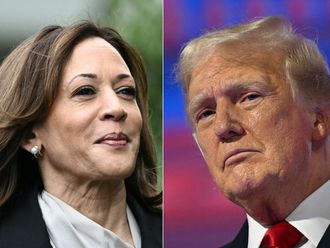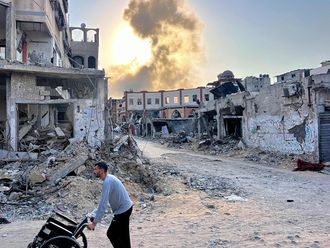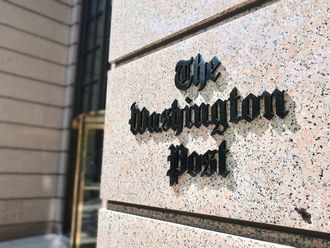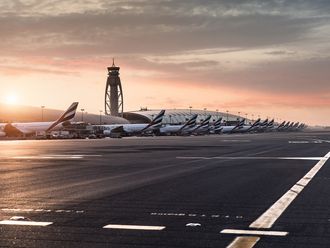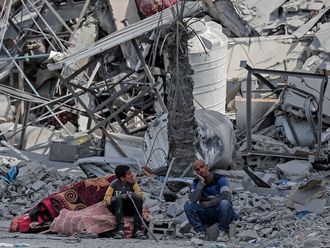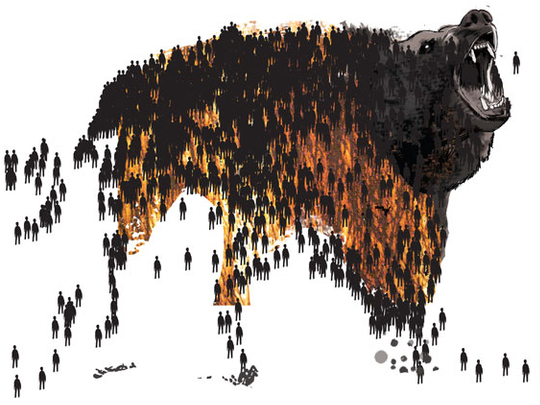
In the 1950s, many Americans feared that the Soviet Union would surpass the US as the world's leading power. The Soviet Union had the world's largest territory, the third-largest population, and the second-largest economy, and it produced more oil and gas than Saudi Arabia.
Moreover, the USSR possessed nearly half of the world's nuclear weapons, had more men under arms than the US, and had the most people employed in research and development. It detonated a hydrogen bomb in 1952, only one year after the US, and it was the first to launch a satellite into space, in l957.
In terms of soft power, communist ideology was attractive in post-Second World War Europe, owing to its anti-fascist credentials, and in the Third World because of its identification with popular national-independence movements. Soviet propaganda actively fostered a myth of the inevitability of communism's triumph.
Nikita Khrushchev famously boasted in 1959 that the Soviet Union would overtake the US by 1970, and by 1980 at the latest. As late as 1976, Leonid Brezhnev told the French president that communism would dominate the world by 1995. Such predictions were bolstered by reported annual economic growth rates of 5-6 per cent and an increase in the USSR's share of global output, from 11 per cent to 12.3 per cent, between 1950 and 1970.
After that, however, the Soviet growth rate and share of global output began a long decline. In 1986, Mikhail Gorbachev described the Soviet economy as "very disordered. We lag in all indices".
A year later, Foreign Minister Eduard Shevardnadze told his officials, "You and I represent a great country that in the last 15 years has been more and more losing its position as one of the leading industrially developed nations."
What is surprising in retrospect is how wildly inaccurate western assessments of Soviet power were. In the late 1970s, a ‘Committee on the Present Danger' argued that Soviet power was surpassing that of the US, and the 1980 American election reflected such fears. Yet in 1991, the Soviet Union collapsed.
The end of the Soviet Union left Russia significantly shrunken in terms of territory (76 per cent of the USSR), demographically (50 per cent of the USSR's population), economically (45 per cent of the USSR's output), and in terms of military personnel (33 per cent of the USSR's armed forces). Moreover, the soft power of communist ideology had virtually disappeared.
Nonetheless, Russia had nearly 5,000 deployed nuclear weapons, and more than a million-strong armed forces, though its total military expenditure was only 4 per cent of the world total (compared to 40 per cent for the US), and its ability to project power globally had greatly diminished.
Dependent on oil
In economic resources, Russia's $2.3 trillion gross domestic output was 14 per cent that of the US at independence, and its $16,000 per capita income (measured in terms of purchasing power parity) was roughly 33 per cent that of the US. Its economy was heavily dependent on revenue from oil and gas, with high-tech goods representing only 7 per cent of its manufactured exports (compared to 28 per cent for the US).
In terms of soft power, despite the attractiveness of traditional Russian culture, Russia has little global presence. In the words of Russian analyst Sergei Karaganov, Russia has to use "hard power, including military force, because it lives in a much more dangerous world and has no one to hide behind from it, and because it has little soft power — that is, social, cultural, political, and economic attractiveness."
The political institutions needed for an effective market economy are largely missing, and corruption is rampant. Russia's robber-baron capitalism lacks the kind of effective regulation that creates trust in market relationships. The public-health system is in disarray, mortality rates have increased, and birthrates are declining.
Many Russian futures are possible. At one extreme, some view Russia as an industrialised banana republic.
Others argue that reform and modernisation will enable Russia to surmount its problems, and that its leadership is headed in this direction. Late in 2009, President Dmitri Medvedev issued a sweeping call for Russia to modernise its economy, wean itself from a humiliating dependence on natural resources, and do away with Soviet-style attitudes that he said were hindering its effort to remain a world power.
But, as Katinka Barysch of the Centre for European Reform argues, Russian leaders' concept of modernisation is overly statist, particularly given that public institutions function so badly.
"An innovative economy needs open markets, venture capital, free thinking entrepreneurs, fast bankruptcy courts and solid protection of intellectual property," she argues. Instead there are "wide-spread monopolies, ubiquitous corruption, stifling state interferences, weak and contradictory laws."
Dysfunctional government and pervasive corruption make modernisation difficult. Peter Aven, president of Alfa Bank, argues that, "economically, it looks like the Soviet Union more and more. There is a huge dependency on oil, a need for capital, a need for serious reforms, while the social burden is very strong. Stagnation is the main threat."
Whatever the outcome, because of its residual nuclear strength, its great human capital, its skills in cyber-technology, and its location in both Europe and Asia, Russia will have the resources to cause major problems for or to make major contributions to a globalised world. We all have an interest in Russian reform.
— Project Syndicate, 2010
Joseph S. Nye, Jr, a former US Assistant Secretary of Defence, is a professor at Harvard and author of the forthcoming book The Future of Power.


